In order to generate a more inclusive dataset of Pseudomonas genes mapped to putative in-paralogs and putative orthologs in other Pseudomonas species/strains, we developed a Pseudomonas Orthologous Groups classification system.
To generate ortholog groups, pair-wise DIAMOND searches were run on all genomes in the database to find reciprocal best hits (RBHs) for each gene. These analyses often resulted in multiple candidate genes for RBH status, which were narrowed down by examining the similarity between the query's flanking genes and the hit's flanking genes. If two candidate genes were directly adjacent, they where both accepted as RBHs that involve putative in-parology.
Pairwise intra-genome DIAMOND searches were also performed to acquire in-paralog information (i.e. gene duplications occurring after species divergence). If two genes in one genome were reciprocally more similar to each other than to any gene in the other genomes, the two genes were designated putative in-paralogs. Ortholog groups are built by starting with a seed gene and then adding all genes to which there is a RBH or in-paralog relationship.
Every new gene added to an ortholog group was then treated as a seed gene and the addition process was repeated until all qualifying genes had been added. The result was the development of orthologous groups, specifically generated for Pseudomonas species genomes, which can be used to sort search results.
Pseudomonas Ortholog Group POG000432
| Strain | Locus Tag | Description | Same-Strain Members | Fragment ? | |
|---|---|---|---|---|---|
| Pseudomonas aeruginosa PAO1 (Stover et al., 2000) | PA0441 |
dihydropyrimidinase
dht |
2 same-strain members: PA0441 PA5541 |

|
|
| Pseudomonas aeruginosa PAO1 (Stover et al., 2000) | PA5541 |
dihydroorotase
pyrQ |
2 same-strain members: PA0441 PA5541 |

|
|
| Pseudomonas aeruginosa UCBPP-PA14 (Lee et al., 2006) | PA14_05770 |
phenylhydantoinase
dhT |
2 same-strain members: PA14_05770 PA14_73070 |

|
|
| Pseudomonas aeruginosa UCBPP-PA14 (Lee et al., 2006) | PA14_73070 |
dihydroorotase
pyrQ |
2 same-strain members: PA14_05770 PA14_73070 |

|
|
| Pseudomonas aeruginosa PA7 | PSPA7_0543 |
phenylhydantoinase
hydA |
2 same-strain members: PSPA7_0543 PSPA7_6343 |

|
|
| Pseudomonas aeruginosa PA7 | PSPA7_6343 |
dihydroorotase
|
2 same-strain members: PSPA7_0543 PSPA7_6343 |
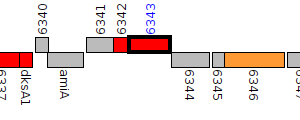
|
|
| Pseudomonas fluorescens SBW25 | PFLU3942 |
phenylhydantoinase
|
2 same-strain members: PFLU3942 PFLU6094 |

|
|
| Pseudomonas fluorescens SBW25 | PFLU6094 |
dihydroorotase
|
2 same-strain members: PFLU3942 PFLU6094 |
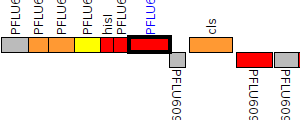
|
|
| Pseudomonas aeruginosa LESB58 | PALES_59371 |
dihydroorotase
pyrQ |
2 same-strain members: PALES_04391 PALES_59371 |

|
|
| Pseudomonas aeruginosa LESB58 | PALES_04391 |
phenylhydantoinase
dht |
2 same-strain members: PALES_04391 PALES_59371 |

|
|
| Pseudomonas protegens Pf-5 | PFL_2548 |
phenylhydantoinase
hydA |
2 same-strain members: PFL_2548 PFL_6183 |

|
|
| Pseudomonas protegens Pf-5 | PFL_6183 |
dihydroorotase
|
2 same-strain members: PFL_2548 PFL_6183 |
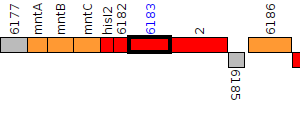
|
|
| Pseudomonas aeruginosa 19660 | Q010_05236 |
phenylhydantoinase
|
2 same-strain members: Q010_05236 Q010_05986 |

|
|
| Pseudomonas aeruginosa 19660 | Q010_05986 |
dihydroorotase
|
2 same-strain members: Q010_05236 Q010_05986 |

|
|
| Pseudomonas aeruginosa 19BR | IAI_RS0102255 |
phenylhydantoinase
|
2 same-strain members: IAI_RS0102255 IAI_RS0131400 |
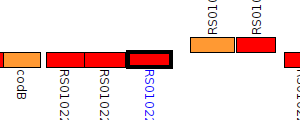
|
|
| Pseudomonas aeruginosa 19BR | IAI_RS0131400 |
dihydroorotase
|
2 same-strain members: IAI_RS0102255 IAI_RS0131400 |
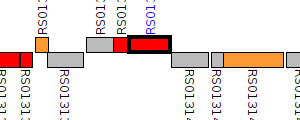
|
|
| Pseudomonas aeruginosa 213BR | IAK_RS0102260 |
phenylhydantoinase
|
2 same-strain members: IAK_RS0102260 IAK_RS0131255 |

|
|
| Pseudomonas aeruginosa 213BR | IAK_RS0131255 |
dihydroorotase
|
2 same-strain members: IAK_RS0102260 IAK_RS0131255 |

|
|
| Pseudomonas aeruginosa 2192 | PA2G_04357 |
phenylhydantoinase
|
1 member |

|
|
| Pseudomonas aeruginosa 3573 | AJ60_02942 |
phenylhydantoinase
|
2 same-strain members: AJ60_02942 AJ60_03818 |

|